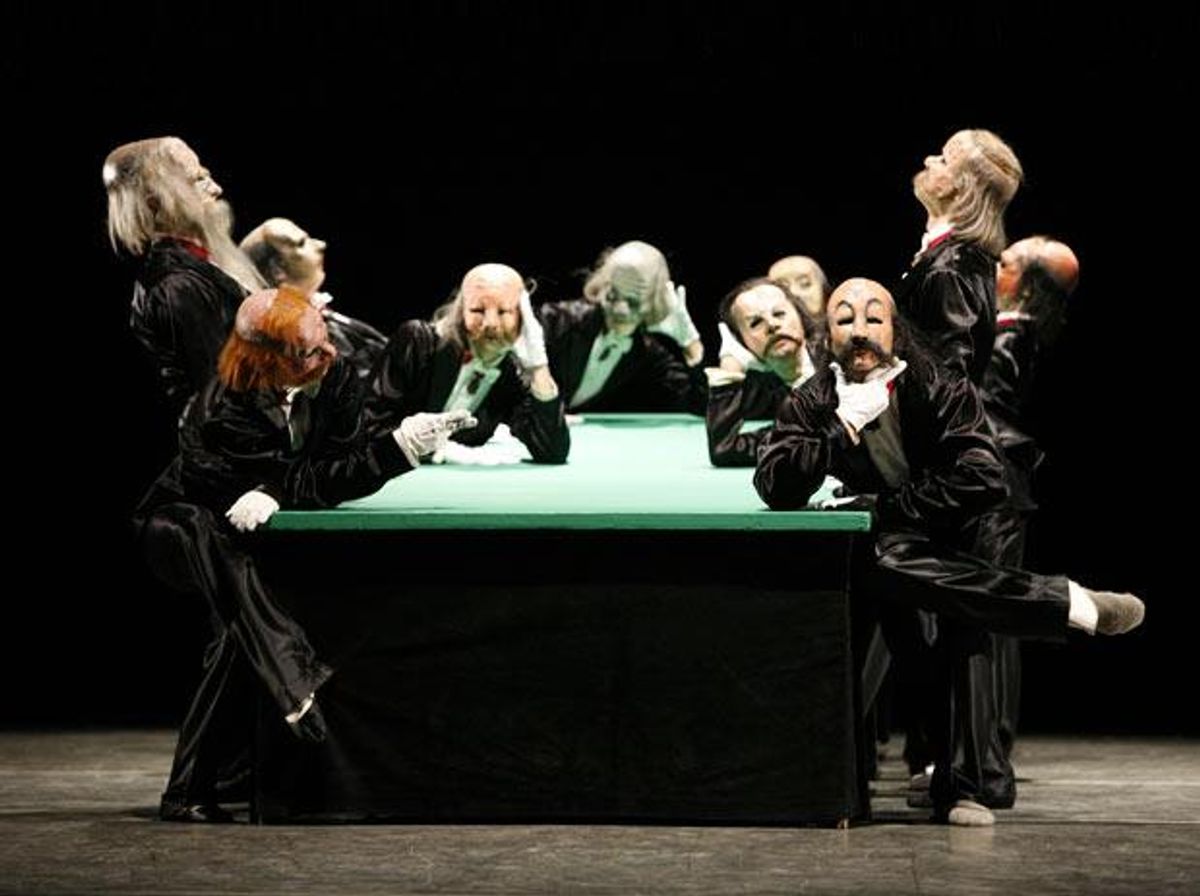Pictured: A scene from 'The Green Table'
In 1932, in response to the devastation of World War I and with grim prescience for what lay ahead, the German choreographer Kurt Jooss created The Green Table, an eerie, powerful dance-theater work that is now considered a classic.
The scenes that bookend the work feature a cabal of politicians (known as "The Gentlemen in Black," wearing suits and grotesque masks) who congregate around said green table and decide to send in the troops. In the intervening scenes, a rigid figure of Death -- in harness, gladiator skirt and a skeleton face -- visits the battlefield, a brothel, and a man known as the Profiteer (whose business is also death) to take his eternal prisoners.
American Ballet Theatre revived The Green Table this season, bringing it back for the first time in 10 years. And it's not the only war-related dance on their season lineup: Also represented is Paul Taylor's Company B (created in 1991), a meditation on World War II set to a bouncy compilation of the Andrews Sisters songs. Side-by-side, they make a strong case that dance can be an evocative illustration of the impact of war on a population.
So why don't we see more ballets that explicitly address similar moments of social upheaval? And why does it feel so unlikely that a company like ABT would present a work like The Green Table if it were created today? It would be controversial, for one thing; it wears its politics on its sleeve. (And you don't want to offend donors and audiences.) And it has none of the pretty lifts and turns or lovely music that we still expect from ballet.
It's admirable that The Green Table is presented at all, but it's already been stamped as a valued artifact, a museum piece, and it's easy to grapple with a century-old war from a safe distance. There are plenty of contemporary dance artists who make war, politics, and social injustice the focus of their work, but they tend to do so on a small scale, in small venues, and not under the umbrella of "ballet."
The most recent example I can think of where modern politics came to the New York ballet stage was courtesy of French visual artist J R who, after a dramatic installation in the Koch's foyer, created the short but impactful Les Bosquets for the New York City Ballet, inspired by the 2005 Paris riots (with echoes of Tahrir and Taksim) and starring the jooking phenom Lil Buck. Meanwhile, NYCB premiered five new works this season, all impressive and inventive and all seemingly abstract musings on interpersonal relations -- nothing that appeared to look out the window and into the messy, chaotic street.
(Imagine an evening of commissioned work in which the choreographers were asked to respond to, update, or take inspiration from The Green Table! You know, put ballet back into conversation with politics. It could be heavy-handed and trite; it could be surprising and fresh. It feels like a risk worth taking.)
Aside from the traditional 19th-century evening-length fairy tales, ballet today doesn't seem interested in original theatrical stories. Where are the plots and characters that tell modern narratives and address modern themes? ABT gave us a new, opulent Sleeping Beauty last year. It was nice. Recently, San Francisco Ballet premiered a new Cinderella, and The Royal Ballet in London had a success with The Winter's Tale, dancing Shakespeare.
Also new to ABT this season was Mark Morris' After You, which premiered earlier this month, and which, as its name suggests, was merely polite. With flowy costumes in Candy Crush colors, it was Morris' work that looked like an 80-year-old revival. The Green Table, dark and frightening and urgent, still reflects our violent, complicated world today. Would that more ballet choreographers used their art to wrestle with it.

























































































